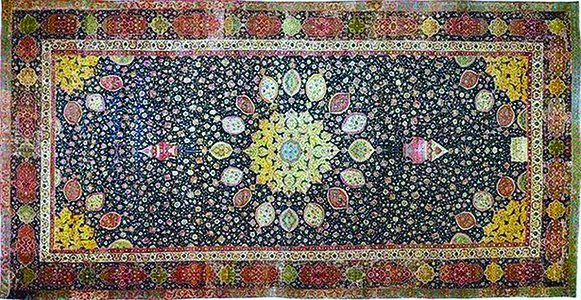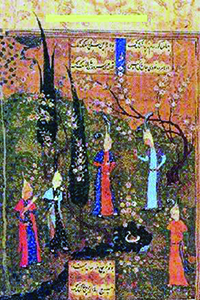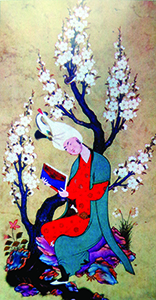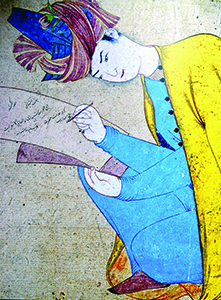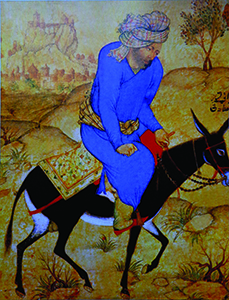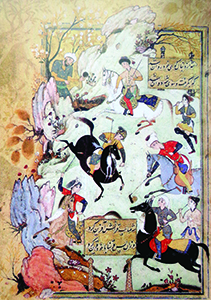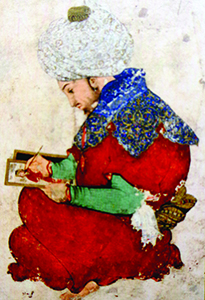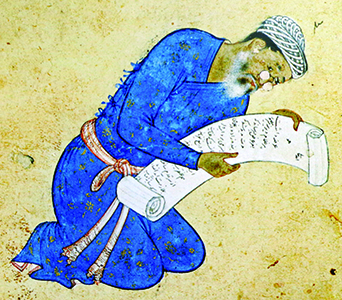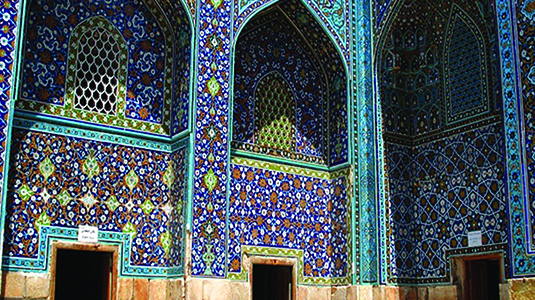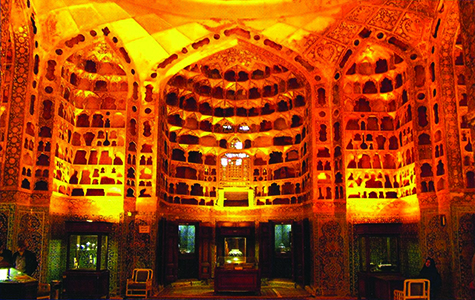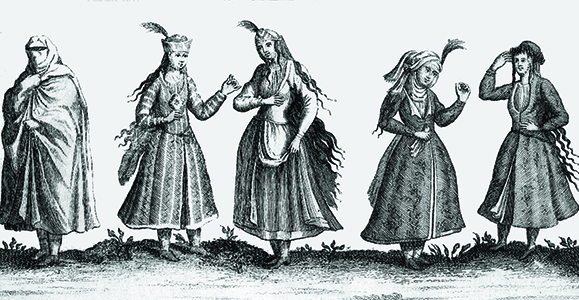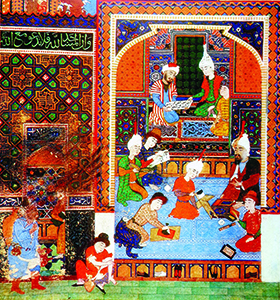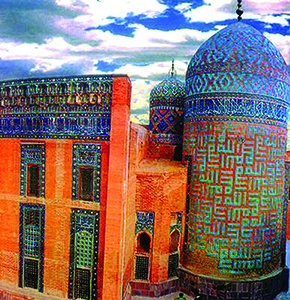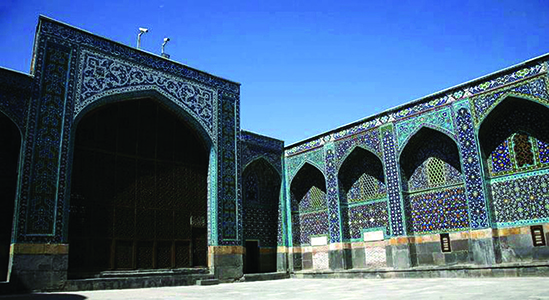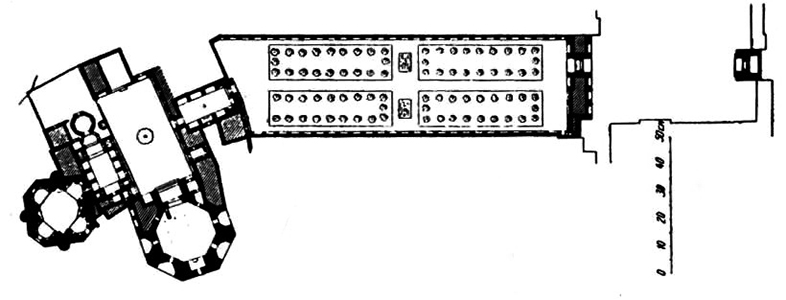Azerbaijani culture in the Safavid period
XIV-XVII centuries were an important period in the development of Azerbaijani culture. The capital of the state, Tabriz, was not only a major political and economic center of the region, but also a cultural center. Beginning with Ismail I, the Safavid rulers paid great attention to the development of culture. As a result, Azerbaijan has become a well-known cultural center of the Middle East.
Shah Ismail I attracted the most famous scientists, poets, calligraphers and artists to Tabriz. The most rare books and manuscripts were collected by the Shah in the Tabriz library. Kamaladdin Behzad, an artist known throughout the Muslim East, has been appointed head of the library.
One of the first measures of Shah Ismail I was the restoration of the Maragha observatory, which was destroyed after the fall of the Elkhanid state. The Shah entrusted the restoration work to the famous astronomer and mathematician Giyasaddin. After that, the observatory, a relic of Nasreddin Tusi, began to work at full capacity.
Among the architectural monuments of this period, the complex around the mausoleum of Sheikh Safi in Ardabil is one of the first. A number of different buildings were built here in the XVI-XVII centuries.
The XVI century is also considered to be the heyday of the Tabriz miniature school. The artistic masterpieces created by this school now adorn the world's famous museums. Aga Mirak, his famous student Soltan Muhammad, as well as talented masters Mir Seyid Ali, Muzaffar and others were well-known artists of this school. The artistic features of the Tabriz school are reflected in the work of its greatest representative, one of the great artists of the Middle East, Sultan Muhammad.
The largest field of applied art of this period was carpet production. Carpets adorned palaces, mosques and tents. In the XV century, Azerbaijani carpets were very popular not only in Eastern countries, but also in Europe. The depiction of Azerbaijani carpets in the paintings of Western European artists of the Renaissance is a clear example of this.
The famous "Sheikh Safi" carpet was woven for the Ardabil mosque in 1539. This large carpet (56 sq. M) is distinguished by the unique composition and richness of colors. Some patterns of the carpet are repeated in the ornaments of the majolica and tile of the Ardabil mosque. This carpet belongs to Tabriz carpet school. His patterns also depict "animal" motifs and hunting scenes: this can be seen on the carpets produced in the Shah's workshops in those years. Carpets were also woven in Shirvan, Ganja-Qazakh and Karabakh in Azerbaijan, but they differed from Tabriz and Ardabil carpets in the content of their ornaments.
Weapons and armor, as well as pottery and bronze vessels and jewelry had a special place among the artistic products of Azerbaijan during the Safavid period; many of them adorn museums around the world today.
During the Safavids, the literary and colloquial languages of Azerbaijan converged and became one. Epics occupy the main place in the Azerbaijani folklore of the time. Many epics, including the "Shah Ismail" epos, reflect real events. Beginning in the XVI-XVII centuries, the poems of ashigs were recorded. Ashig poetry influenced cultural life as a specific form of national art.
For centuries, Azerbaijani music has been developing within the framework of folk art. Folk song creation reflected various aspects of national life. Dance music was an independent field in Azerbaijani folk music.
The state paid special attention to the development of sports. In villages and almost in all quarters of the cities there were "zorkhana" centers where different types of wrestling were developed. Archery competitions were widely held. Among the sports, folk horse games and equestrian sports should be especially noted. It was very popular as a species that served in the preparation of combat cavalry. In particular, the types of "chovgan" game were widespread.
A special role in the development of the Azerbaijani language, as well as poetry written in the native language belongs to Shah Ismayil I. He wrote poems under the pseudonym "Khatayi" (name of the Turkic tribe near Ardabil) and is considered a classic of Azerbaijani poetry. Among the works written by Khatayi in the Azerbaijani language, the poems "Dahname" ("Ten Letters") and "Nasihatname", 400 ghazals and 100 poems have survived to the present day.
A meeting of poets with the participation of the most famous poets - Sururi, Shahi, Qasimi and others was held in the palace of Shah Ismail, who patronized the poets, under the chairmanship of the poet Habib.
With such care for the native language and literature, the development of national Azerbaijani poetry was inevitable. In the fertile conditions created by Shah Ismail, the giants of all Eastern poetry, Muhammad Fuzuli, as well as poets such as Ruknaddin Masihi, Sahib Tabrizi, Govsi Tabrizi appeared. The prestige of the Turkic language, raised to the heights by the will of Shah Ismayil, allowed Fuzuli to create the poem "Leyli and Majnun" and other masterpieces in his native language.
Sheikh Safi ad-Din khanagah and shrine in Ardabil
Shah Ismail I died on May 23, 1524 in a place called Mangutay near Tabriz, and was buried in the mausoleum of Sheikh Safi, where other members of the dynasty were buried in Ardabil.
The mausoleum of Sheikh Safi (full official name - Ardabilga Sheikh Safi ad-Din Khanagah and Shrine) complex is one of the most magnificent architectural monuments built in Azerbaijan in the XVI-XVII centuries. The first building was built in the XIV century. The complex consists of interconnected buildings lined up around the courtyard: Sheikh Safi's tomb, Shah Ismail's tomb, a number of other tombs, Chinikhana (Porcelain House), library, mosque, pool, hospital, kitchens, rooms for pilgrims, etc.
The interiors of the buildings were decorated with gold and silverware, beautiful carpets, as well as the Sheikh Safi carpet, woven specifically for the complex and known in the history of art as an outstanding example of art. Most of them were removed from Ardabil at different times and are now displayed in museums around the world.
In 2010, the complex was included in the UNESCO World Heritage List.
